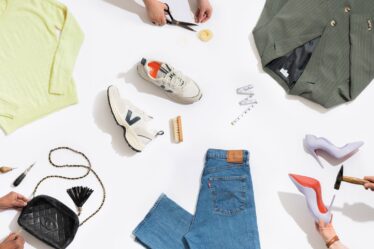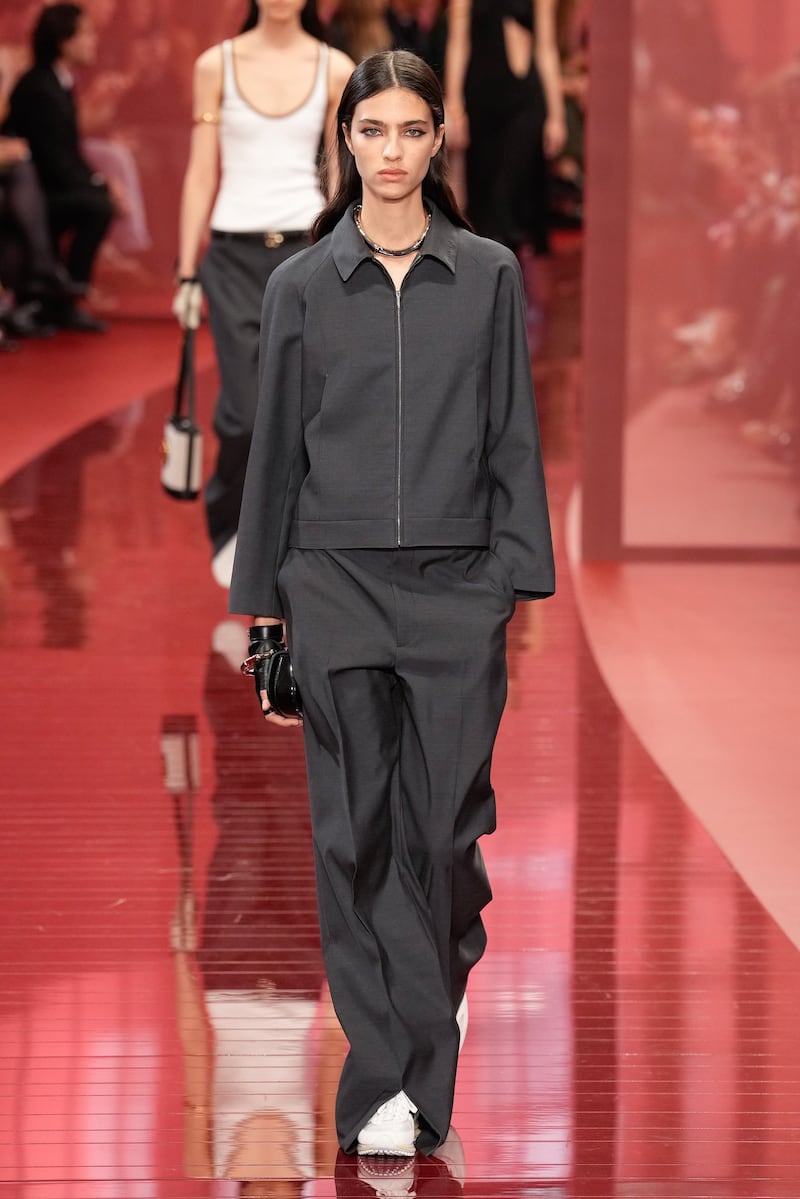
MILAN — After Gucci showed its cruise collection in London last May, I described Sabato De Sarno as stubborn. After Gucci showed its Spring 2025 collection in Milan on Friday, I’m revising that impression. De Sarno is true to himself, obsessively, almost painfully, so. “My taste is the same as it was at the start,” he insisted at a preview on Thursday. “It’s exactly what I want for Gucci, what Gucci means today.” And he is sticking to that, regardless of the nattering nabobs of negativism who have dogged his first year at the brand. (I know, I’ve been one of them.) How that will work out for his paymasters at Kering is still way up in the air. Friday was a marked improvement, but, at the same time, De Sarno strikes me as a self-saboteur because he sets the bar so high for himself. Case in point: Casual Grandeur, the theme he’d given himself for the season. Jackie Kennedy-Onassis ruled supreme at Valentino, De Sarno’s previous home, and he’d remembered someone referring to her style as “casual grandeur.” On his mood board, Jackie and Mariella Agnelli were summering in Capri, Jackie’s sister Lee was somewhere else with Andy Warhol. Also featured, Franca Sozzani’s first cover for Vogue Italia, July/August 1988, model Robin MacKintosh in a white shirt by Gianfranco Ferre, the finest architect of white shirts in the history of fashion. All of it casual grandeur, for sure. But when De Sarno set out to match such resonance, he was surely doomed to disappointment.
He claims he has four obsessions that guide his design ethos: tailoring, lingerie, leather, and silhouettes from the 1960s, when Gucci dressed the jet set. In a preview on Thursday, De Sarno was keen to show how perfectly finished his tailored pieces were, and how they were even cut from a grey wool/silk fabric that was a conservative menswear classic. He claimed he’d been obsessed with shape since the beginning of his career as a pattern-cutter at Prada. But when model of the moment Loli stepped onto the catwalk, her casually sportswear-ish combination of zipped jacket and pants that broke over her trainers said more classy tracksuit than casual grandeur. A bit diffusion. See what I mean about De Sarno being his own worst enemy? He raises expectations that he can’t meet.

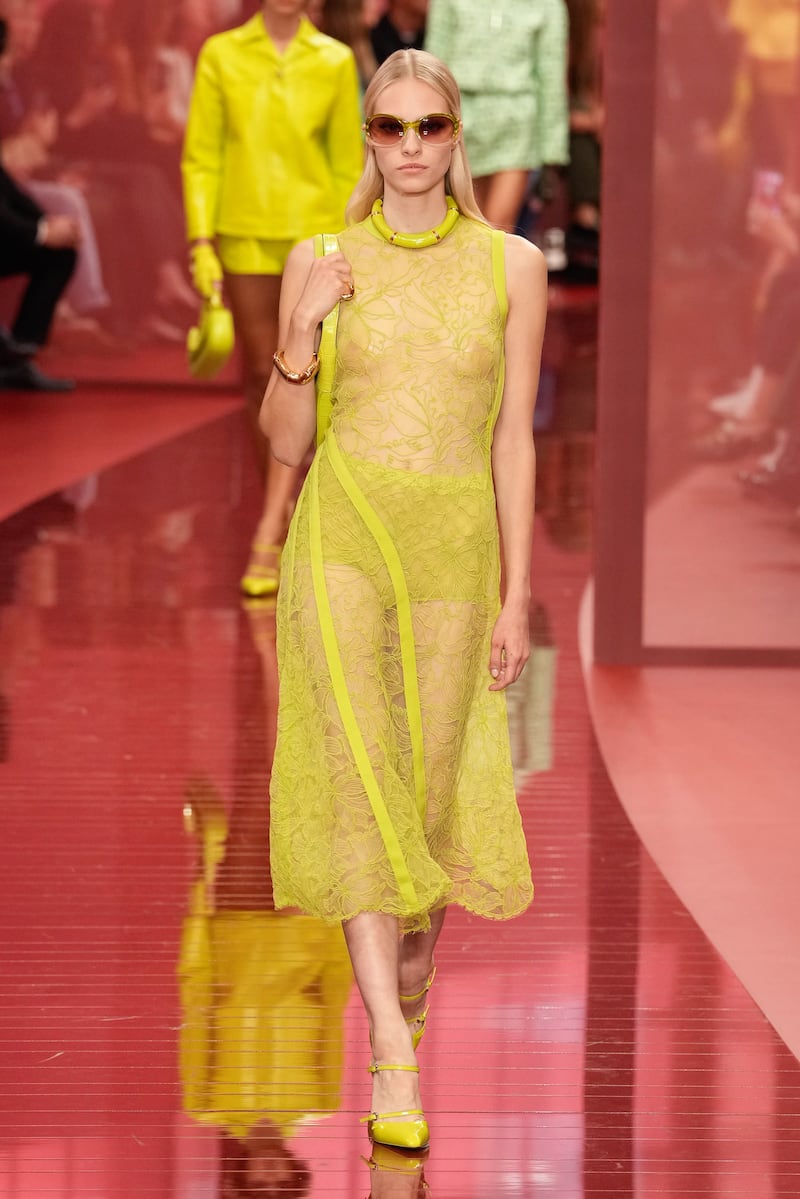
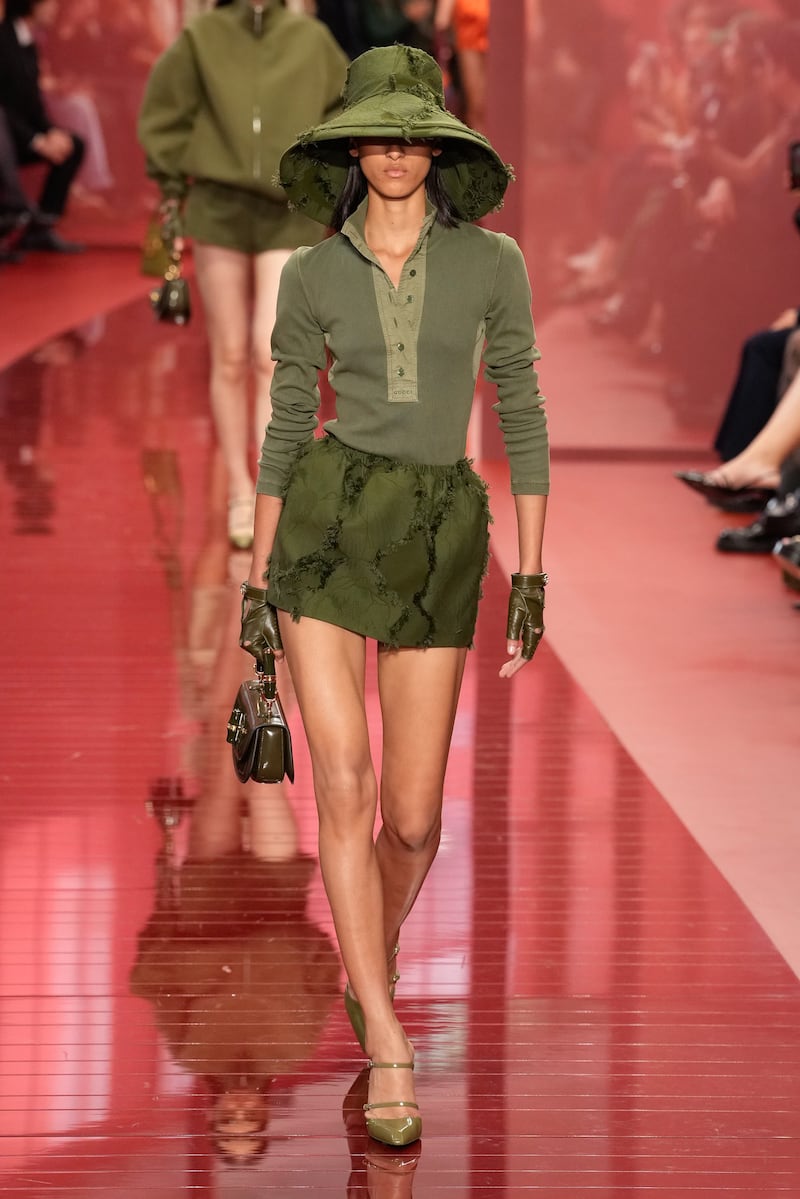

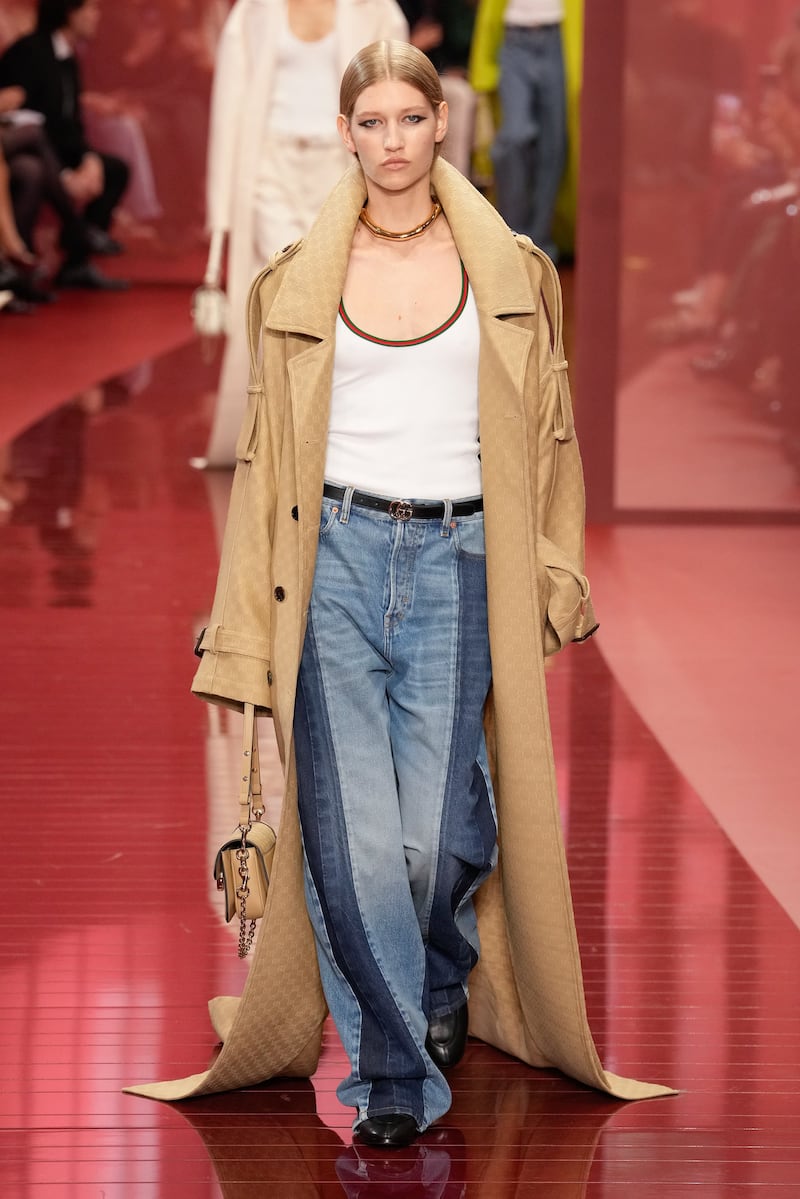
That opening probably wasn’t the best place to start. The end was a better beginning. Five classic coat styles – trench, kimono, overcoat, functional work coat, and evening coat – were dramatically exaggerated with floor-sweeping volumes. The practicality of such pieces might be debatable but, paired with a cotton tank and jeans, they definitely spoke to casual grandeur. Monumentalism, even. There was actually something quite somber about them, odd for a brand that has bubbled with effervescence in the past under Ford and Michele. De Sarno felt sober tone on tone and monochrome simplified extravagance and made it accessible. Like the dress in citron lace (that would be his lingerie fascination) with matching bag and shoes. The look definitely had a vibe, as did the matchiness of the citron leather ensemble that followed it on the catwalk, and all the other head-to-toe looks. Choose one: the washed cotton knit military top with the elasticated-waist bubble skirt and the khaki sun hat. Apocalypse Wow! I was strangely drawn to such a functional oddity.
Another of De Sarno’s obsessions is fringe, which probably explains why the strongest pieces in his collection included a couple of coats spiralled with fringes of metallic beading. In fact, all his coats were great, which makes sense given that his coat compulsion is well documented. But these particular fringed pieces came in charcoal and military green, sober to the end. And that made me reflect on the fact that De Sarno has never really seemed to cut loose in his collections for Gucci. At this point, he has absolutely nothing to lose. Less casual, more grandeur. But there was, in fact, one element in Friday’s presentation which offered a glimpse of another Gucci under De Sarno. To mark the 60th anniversary of the launch of the Bamboo 1947 bag in Japan, he’d asked 10 Japanese artists to reinterpret 10 vintage examples. Photographer Daido Moriyama printed his with a pair of sinister, glossy black lips. If tomorrow comes, it’s the thing I’ll remember most about this show.
I have a feeling that Adrian Appiolaza is a designer’s designer, the kind of guy who combines boundless creativity with artful technique and a natural appetite for fucking things up a bit. A perfect fit for Franco Moschino, in other words. Appiolaza calling his third collection for the brand “A Piece of Sheet,” which was the kind of punning gambit Franco would have appreciated. Even more so when Appiolaza opened his show with a model cleverly draped in a bedsheet while loads of white laundry dried on lines above the heads of the audience.
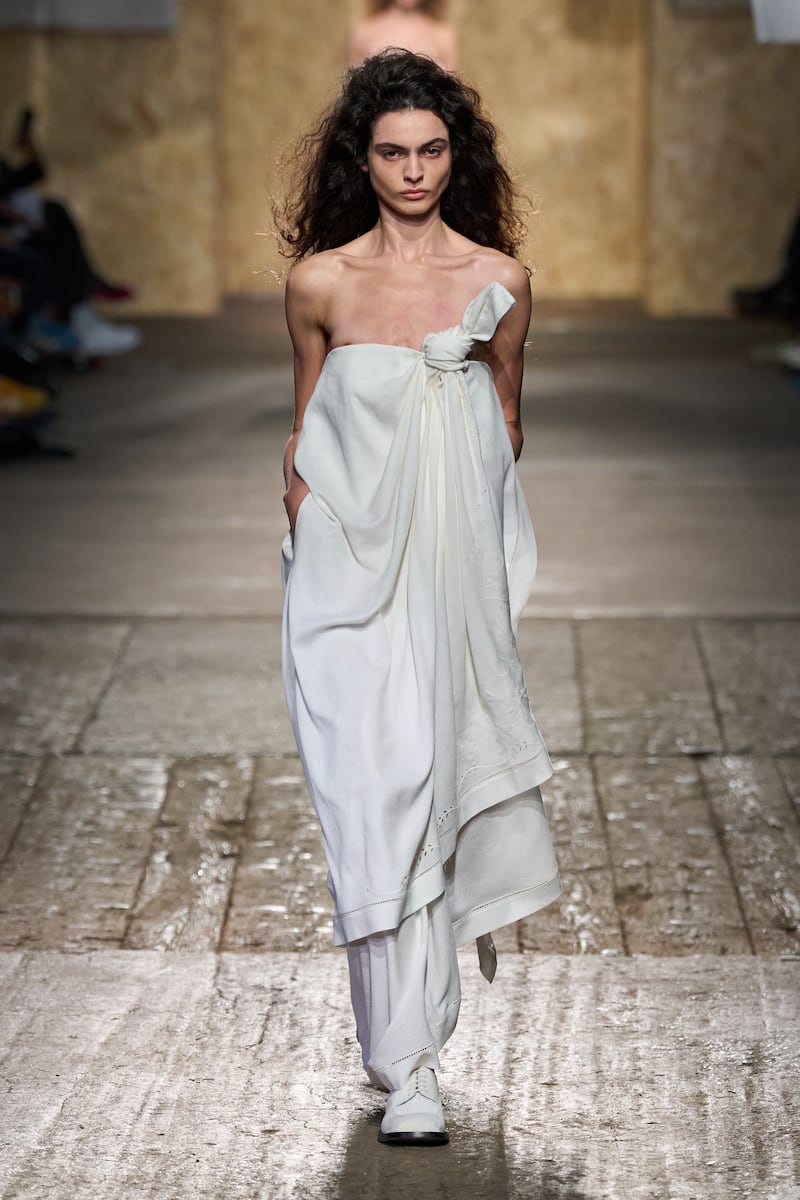
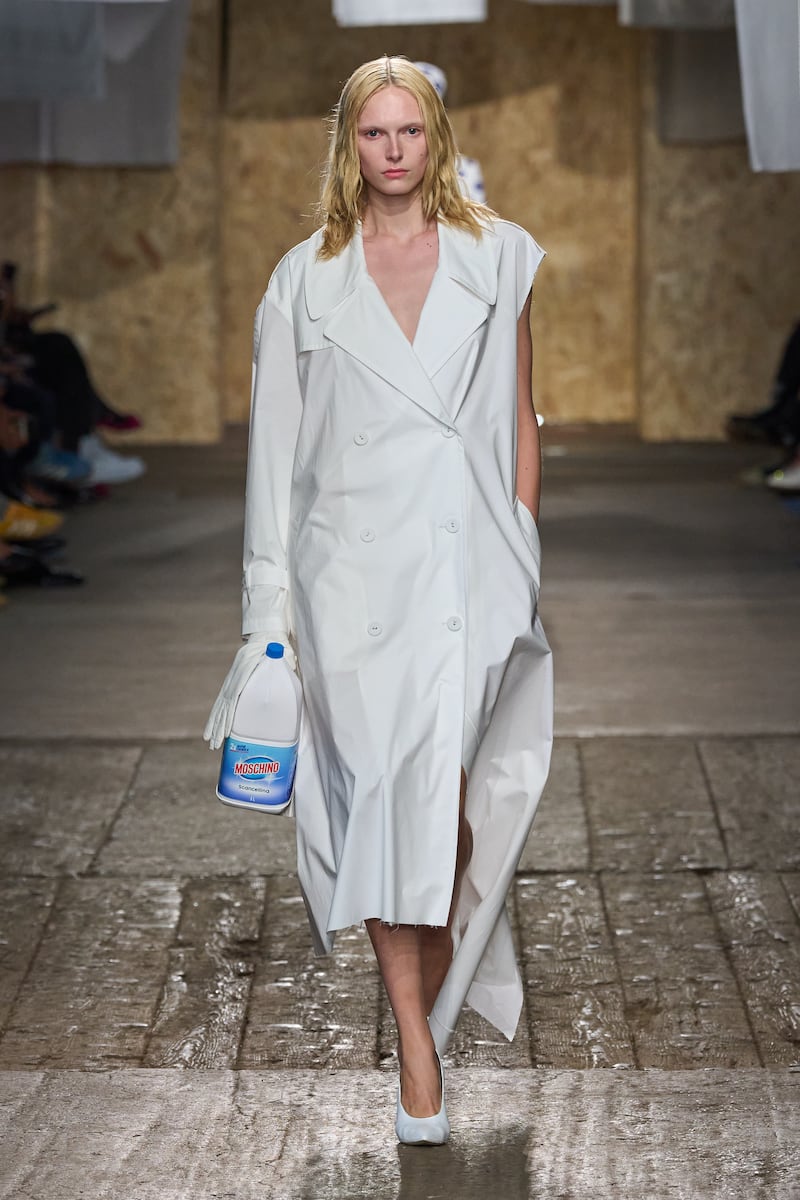
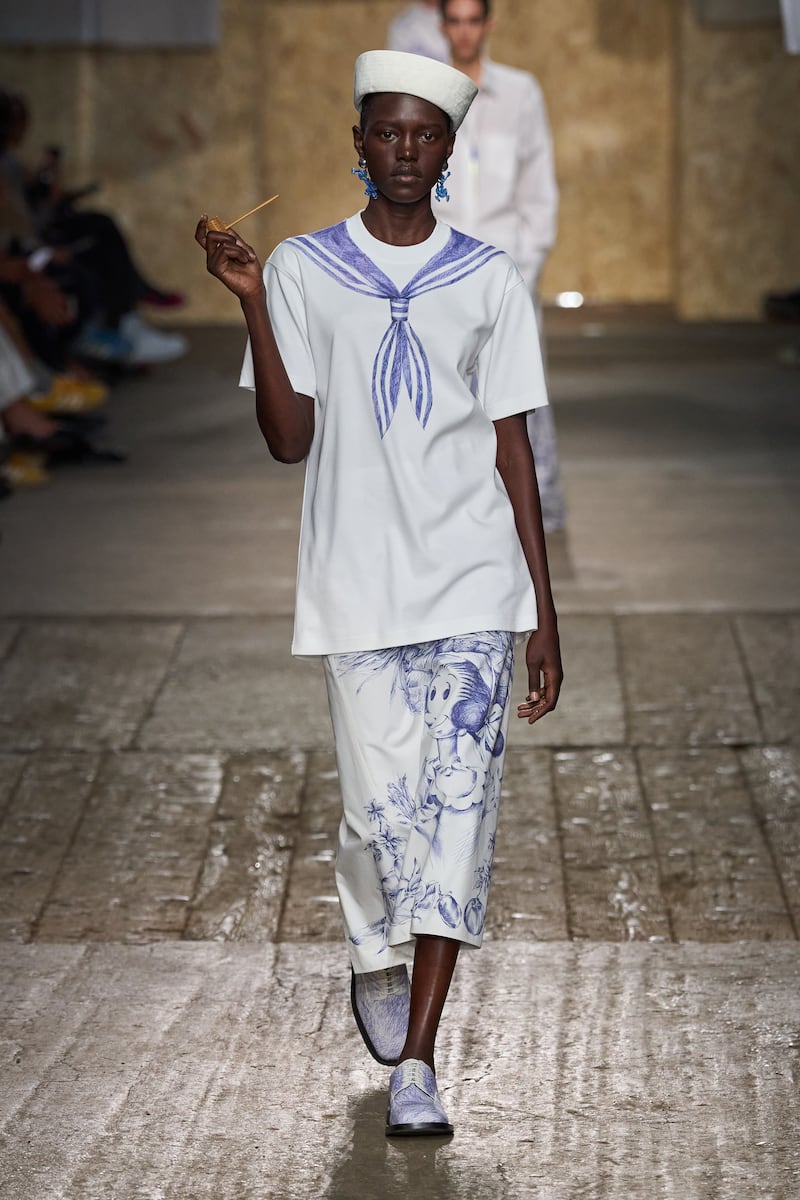
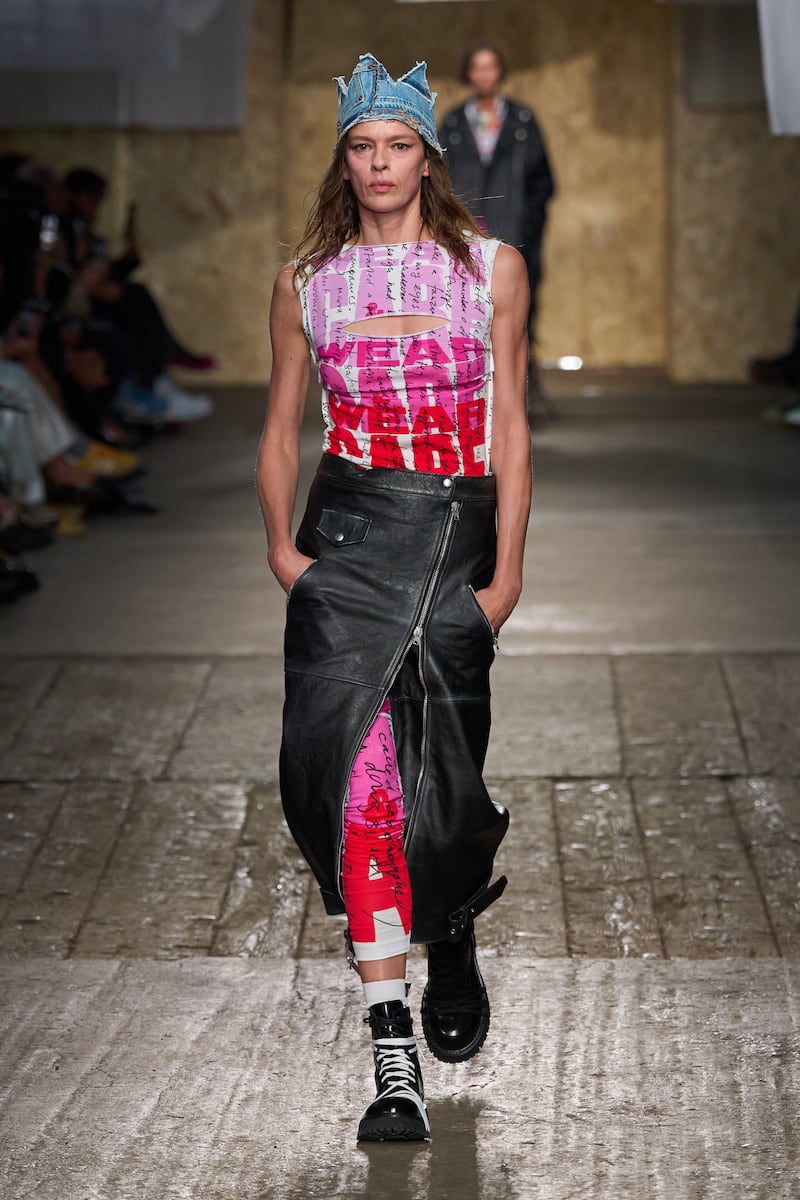
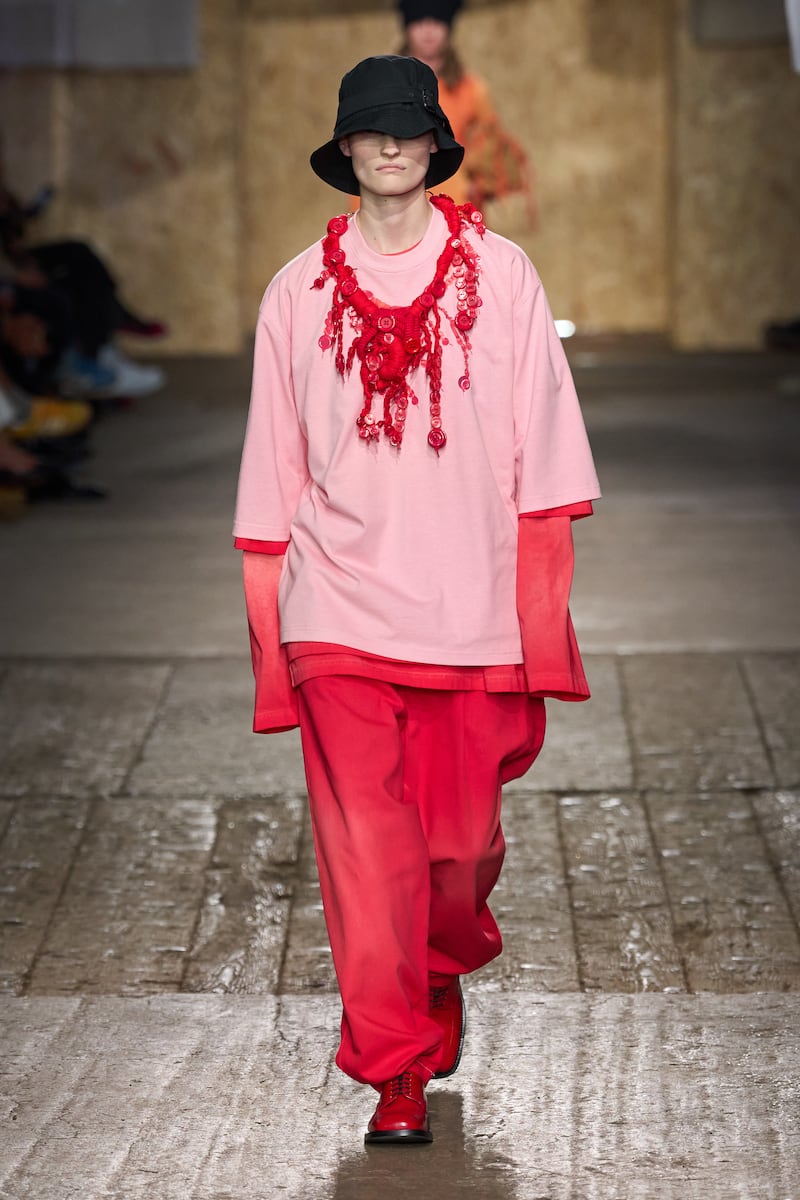
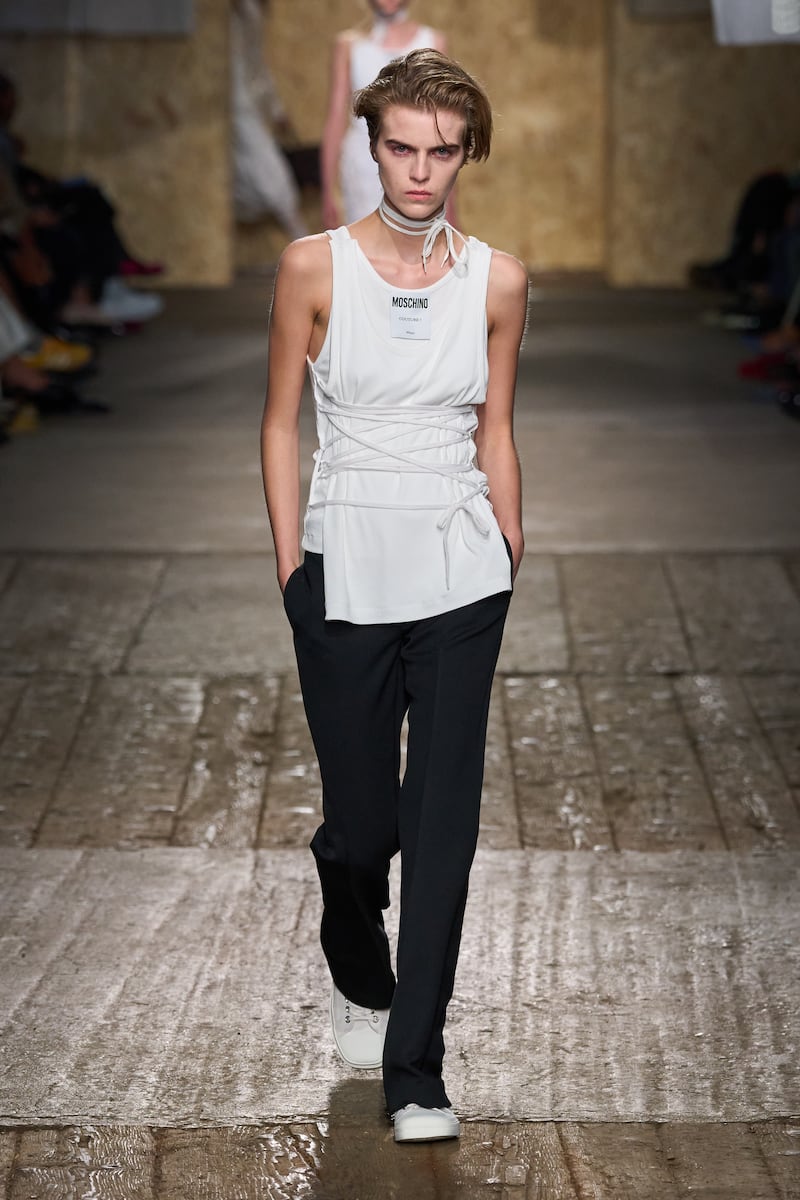
“The ordinary made extraordinary” was Appiolaza’s ploy, which is just what you’d expect from a man who has a gorgeous Deftones tattoo on the back of his neck. It’s almost become a fashion cliché in the past few years, but Moschino has a track record for exalted banality, which was acknowledged on Friday in the bottle of Moschino-branded bleach carried by a model clad in a blinding white trench (which on reflection, I choose to think was also cut from a bedsheet). There were so many lovely, prosaic flourishes in the collection: the white t-shirt turned into a sailor top by a ballpoint pen drawing of a kerchief round its neckline; the same biro used to outline a trench coat on a t-shirt dress; a “blackboard” coat with a child’s chalk drawing on its backside (actually something Franco himself drew as a child); the same drawing duplicated in coloured crayons on the back of a white coat. Then there were plain old shoelaces drawing more of those white t-shirts into Araki-styled bondage pieces. And Elise Crombez in a denim crown.
Appiolaza has already proved himself a reliable guardian of Moschino’s legacy by acknowledging the fundamental seriousness of Franco’s work, all punning and cartoon iconoclasm aside. So this time he didn’t need to push the boat out on the happy faces, the pearls and the polka dots. What am I saying? Appiolaza printed polka dots not only on fabric but also on flesh. But I reckon that was a tip of his cap to Leigh Bowery, because one of the major threads of the collection was a tribute to London’s most influential fashion tribes. Terry Jones, co-founder of i-D magazine, contributed some verbal pith for prints – WEAR AND CARE, WHAT’S UP – and Judy Blame, one of the most enduringly subversive influences on British fashion, was remembered in examples of his bricolage jewellery and the re-issue of archive items. They suggested a generosity of spirit on Appiolaza’s part that bodes well for his future at Moschino – and, indeed, his future in fashion. In collaborations, we stand together. Outside them, we fall apart.


